Use Cases
Use Cases are curated collections of pre-built guide packages that were designed by Oracle experts and are based on real business scenarios. Use Cases provide guide templates that employ Oracle best practices for various Oracle Fusion applications. Each Use Case may contain one or more guides of various categories, including Message guides, Process guides, Smart Tips, etc.
The Use Cases screen is displayed.

To switch between the views:
Use the List View icon (
) and the Tile View icon (![]() ) to switch between your preferred views.
) to switch between your preferred views.
By default, all the Use Cases are displayed in Tile View.
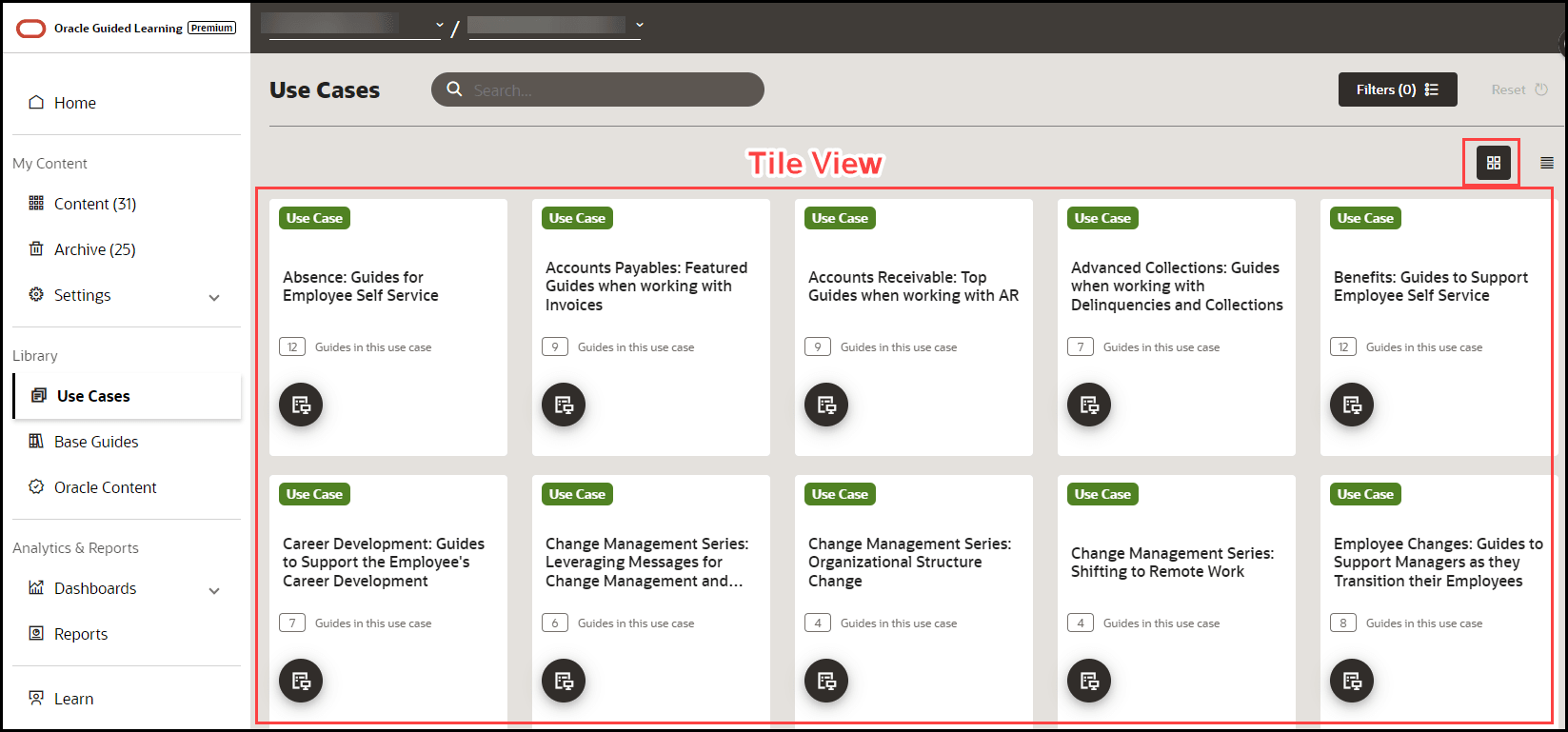
Select List view and you can view the use cases listed.
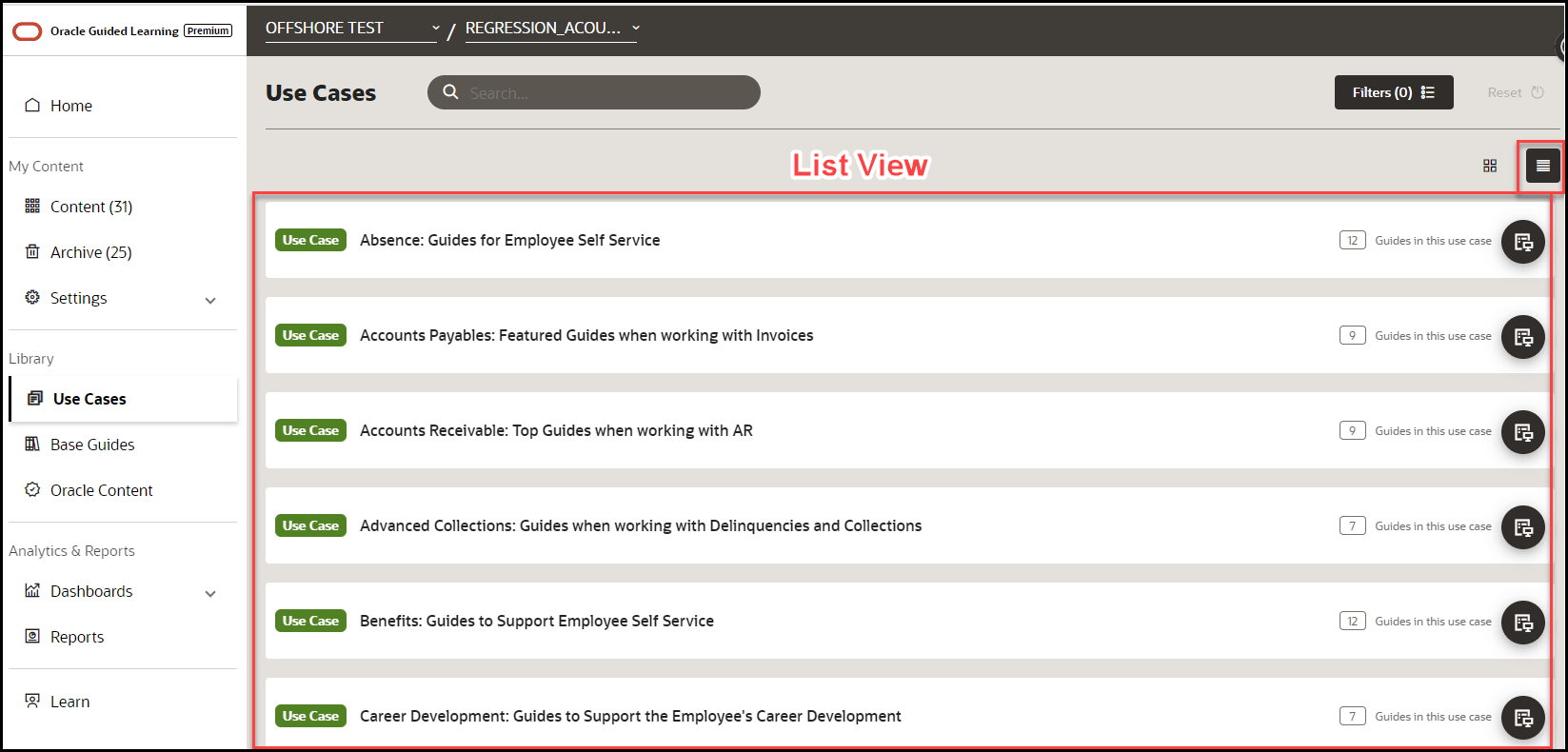
Applying Filters
The Use Cases library will display pre-built content items that are ready for you to import into your My Content library. You can use the preset Product and Module filters in the Filters panel to narrow the list of content items displayed based on specific application products.
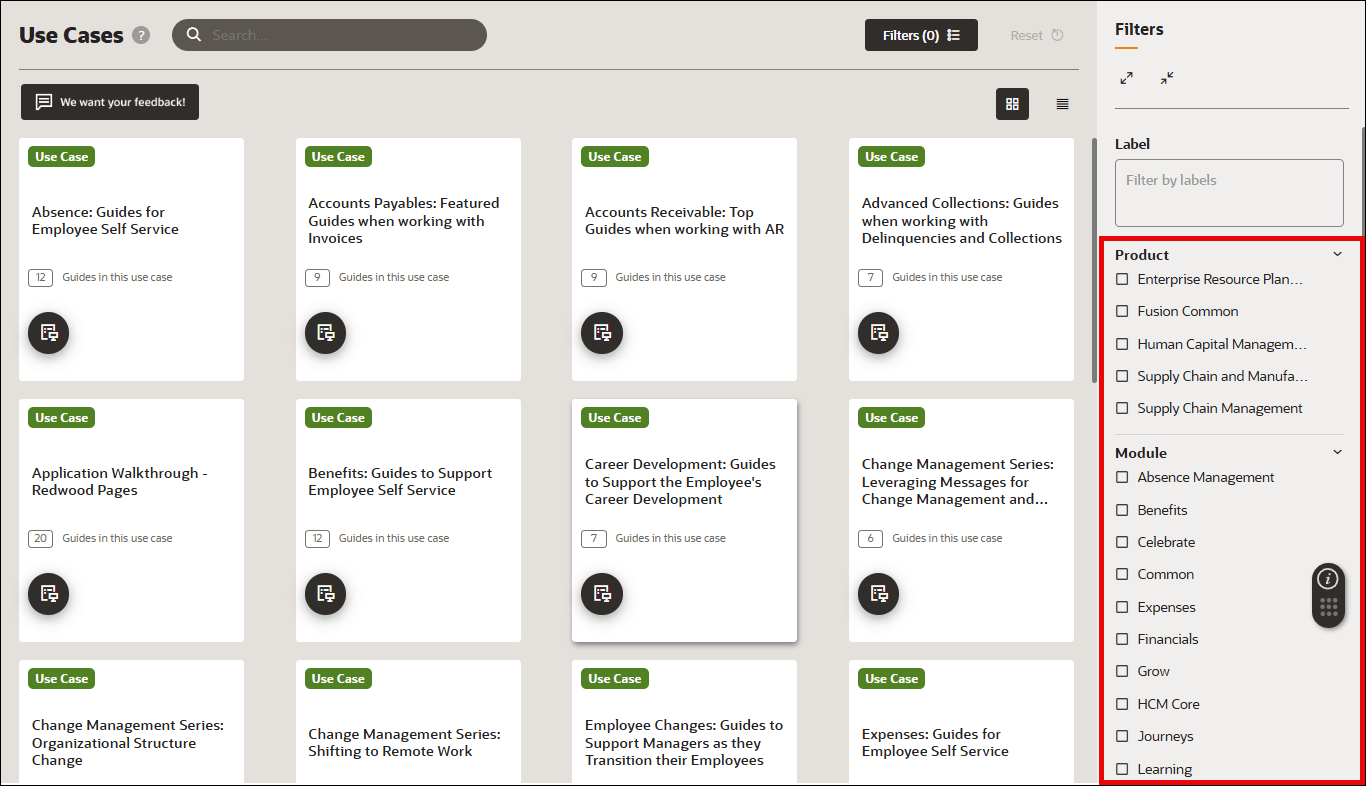
Use Cases are available for various Oracle Fusion applications, such as HCM, ERP, SCM, CX, etc. To choose which available products will be displayed in the OGL libraries pages, go to Settings > Application. Select the dropdown menu below "Available Products for Content Display in the OGL Libraries" and select all application products that apply:

With any Use Case content items, or guides, you can select Preview
(![]() ) to see a preview of the content item or select Copy to My Content
(
) to see a preview of the content item or select Copy to My Content
(![]() ) to import the item into your My Content library.
) to import the item into your My Content library.
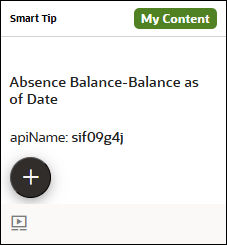
Note:
Any content item that is displayed with a My Content (Default Language Configuration Required
Before importing any content items from the Use Cases library, you will need to configure the Default Language within the Application Settings for your OGL APPID. If this configuration has not been successfully applied, you may see the following error message when attempting to import any content item from this library:
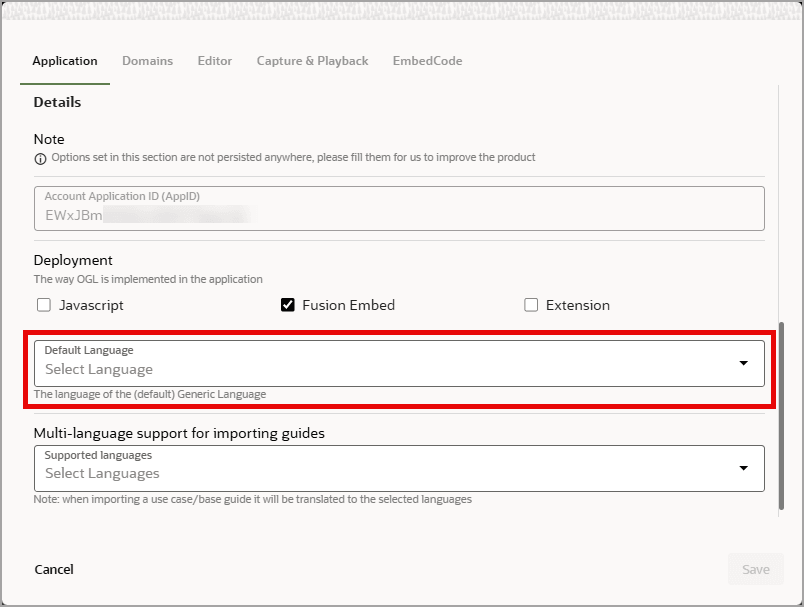
Multi-Language Support for Importing Guides
If you manage multi-language OGL content and intend to translate any imported Use Case content items into other languages using OGL's Auto-Translation feature, you will need to select a Default Language that is supported for Auto-Translation.
For example, 'English' is a Default Language that is supported for Auto-Translation; however, 'English - United States' is not a supported language. If you select an unsupported Default Language, you will see the following message appear below the Default Language menu:

Once you select a supported Default Language, another dropdown menu will display below allowing you to select any additional languages you wish to support for importing guides. When importing any Base Guides, the guides will automatically be translated into these selected languages and will appear in their respective language folders in the My Content page.

Note:
For more information about OGL's Translations and Multi-Language capabilities, please refer to the following User Guide topic:
Inclusion of ‘Labels’ on Content Management Report for Use Cases Library
The Content Management reports for Use Cases library now include label information, enabling teams to efficiently track and filter base content by labels such as release version or type of content. This enhancement improves visibility and addresses a frequently requested feature from both internal teams and clients.
From the left navigation, select Use Cases library.

Select the Kebab menu to the right of your Username and click on ‘Content Management’ (Appropriate permission required.)

The content management report will be downloaded to your local machine; you will see the ‘labels’ field added as the last column in the report.
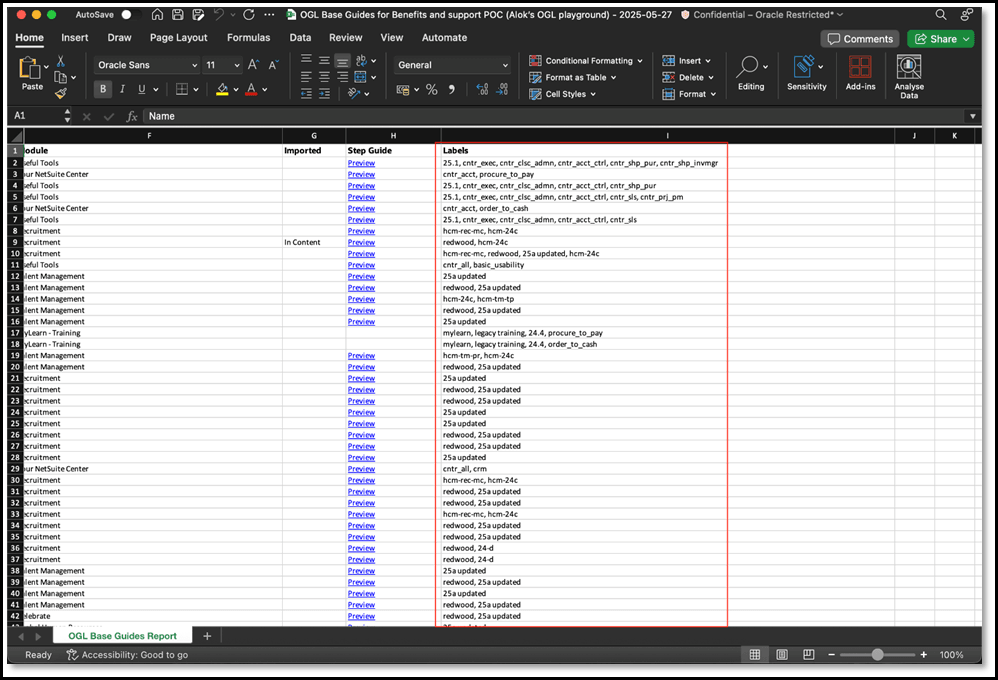
![]()